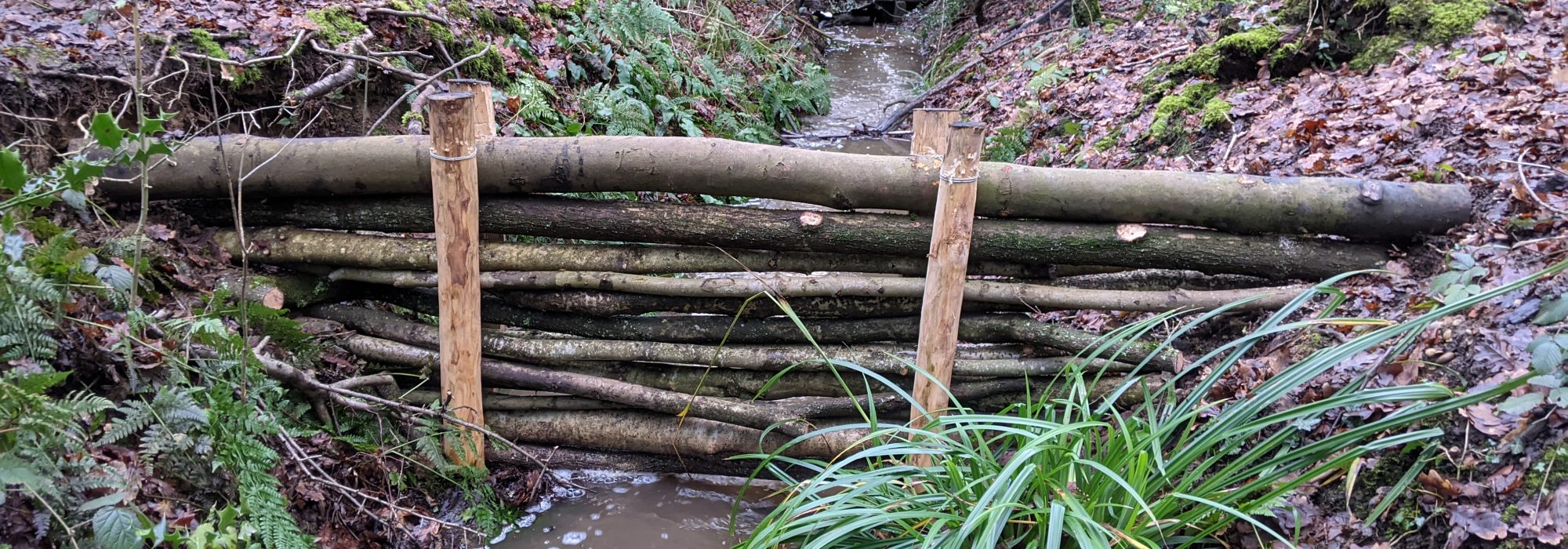Natural Flood Management
Why we’re working on Natural Flood Management
Huge areas of London are at risk from flooding. Yet we know that healthy river catchments store water in the landscape, slowing down the flow of water downstream. By restoring natural processes as much as possible through Natural Flood Management (NFM) in four key London areas, we aim to reduce flood risk while at the same time boost biodiversity, access to green space and river health. Leaky dams, tree planting and river bank planting are some of the measures that we are trialling.
How you can be part of the solution
We’re trialling different approaches in different areas and collecting evidence to see how they’re working. We’d love you to join us!
Got a smart phone and like green space? Share your photos with us and help tackle flooding in London with the Slow the Flow app.
Learn more about NFM through our free resources:
How to get started as a Slow Flow Catcher citizen scientist
Key principles of Natural Flood Management
What is Natural Flood Management?
Healthy river catchments store water in the landscape, reducing the volume and slowing down the flow of water downstream. They are also full of highly valuable natural habitats. Natural Flood Management (NFM) is the practice of using and enhancing the natural landscape’s ability to cut flood risk, soak up pollution and provide biodiversity. The aim is to work with nature to restore the natural functioning of river catchments, but where that isn’t possible, to emulate natural processes. Depending on the character of the local area, that could involve creating storage ponds, planting trees, reducing soil compaction, restoring meandering rivers, creating wetlands, or building leaky dams using local sourced untreated timber.
Flood risk in London
In London more than 165,000 of us live or work in areas vulnerable to flooding, and this will increase each year due to climate change.
Our towns and cities have lost areas where water can naturally soak into the ground as large spaces are covered with artificially impermeable surfaces. This means far more water flows very quickly to drainage networks and directly into our rivers. Meanwhile, many urban watercourses have been straightened to allow water to move through speedily. With increased volumes of fast moving water, this means urban waterways flood easily.
Conventional hard engineered flood defences can reliably protect some communities, but are often costly and can harm the environment: destroying water habitats and disrupting the ability of the land to soak up water and pollution.
Our London NFM projects
Understanding of NFM and its multiple benefits has increased over the last decade. Several rural areas in the UK have demonstrated effective reductions in flood peaks, for example the Stroud Rural SuDS project in Gloucestershire. However, there have been very few projects in urban or peri-urban (city edge) settings.
Thames21 has been investigating the effectiveness and impacts of NFM when working with communities and stakeholders across four sites in London: Hillingdon, Harrow, Enfield and Havering (the latter as part of the Land of the Fanns project). This project, begun in 2018, has been funded by DEFRA.
Get Involved
Got a smart phone and like green space? Share your photos with us and help tackle flooding in London with the Slow the Flow app
For more information please contact our NFM Programme Manager by emailing: Stephen.Haywood@thames21.org.uk
